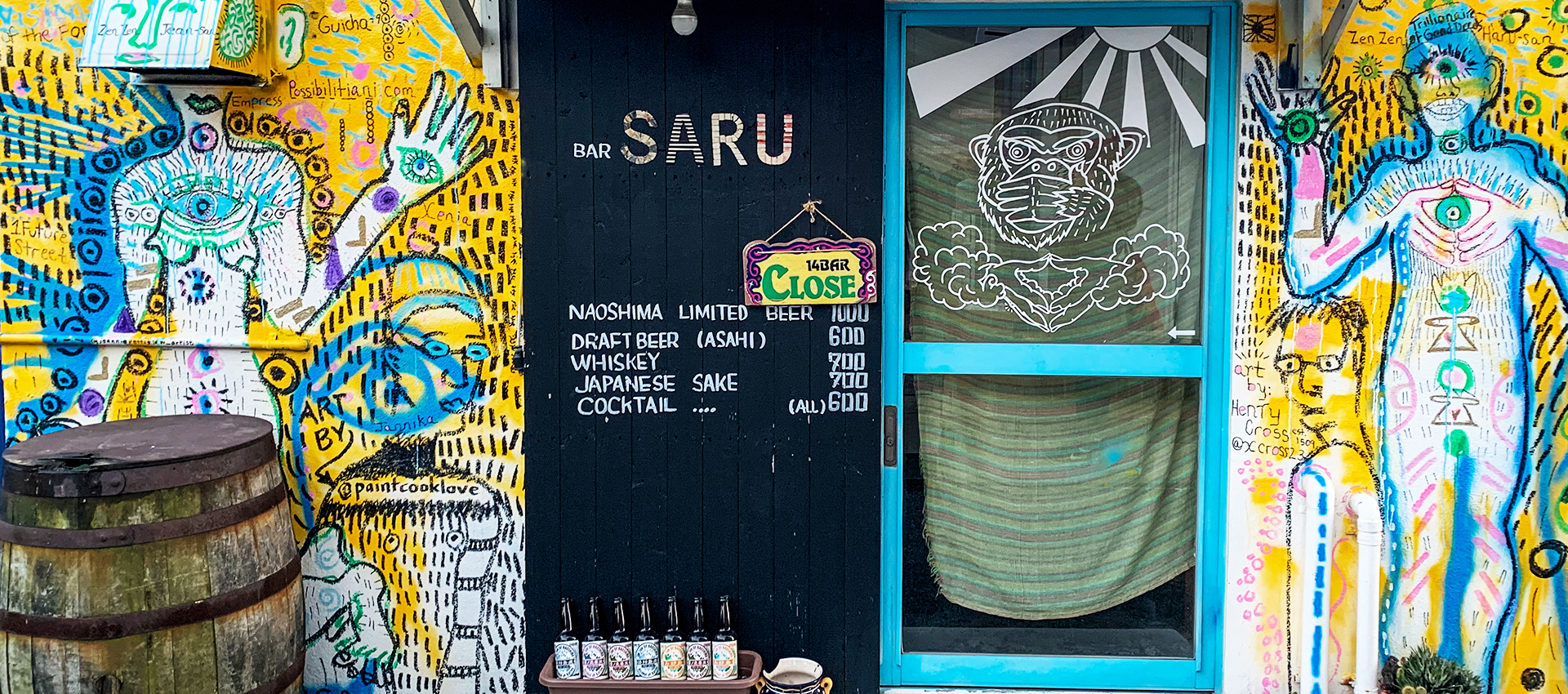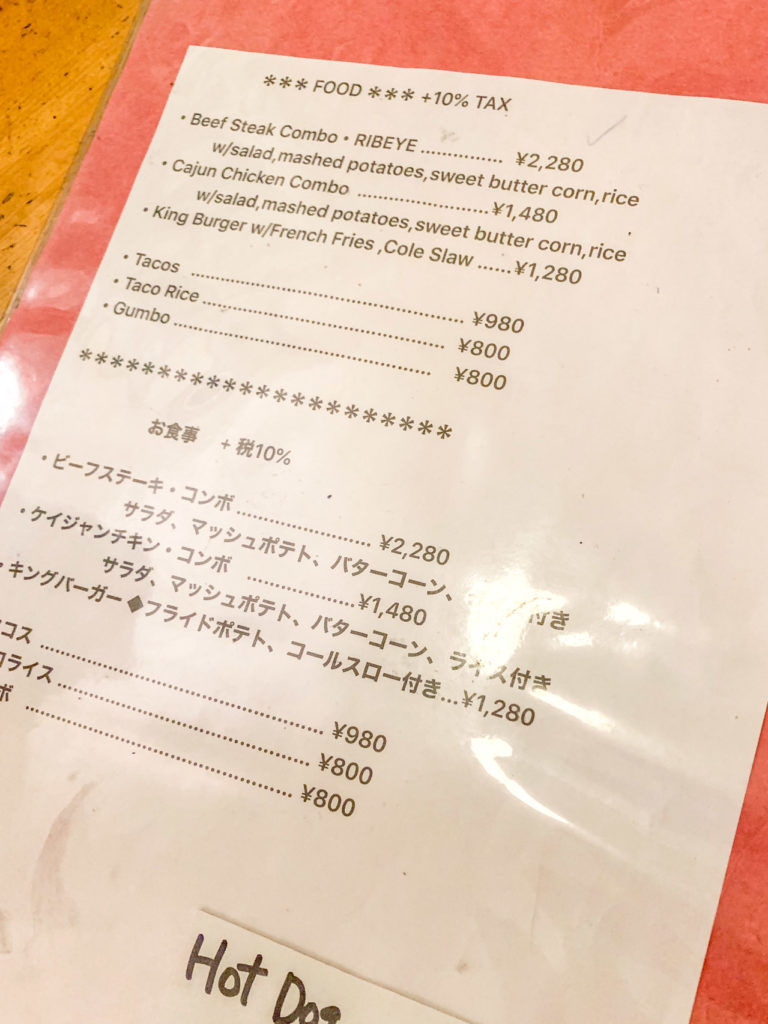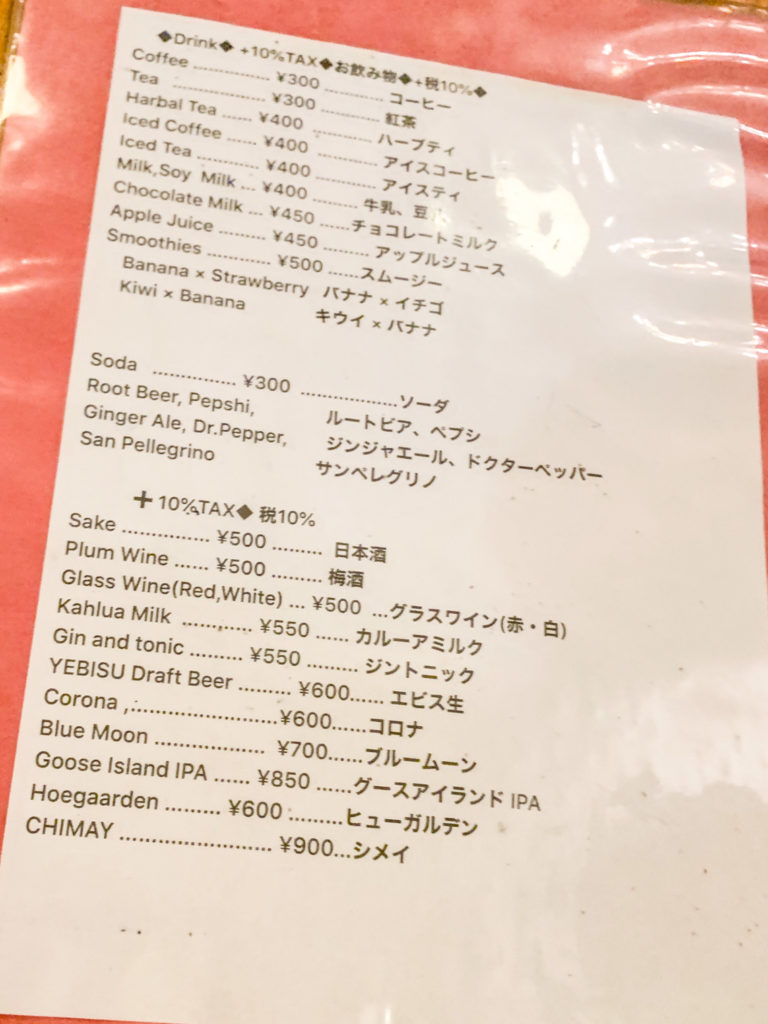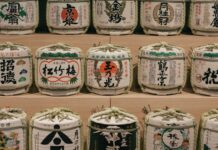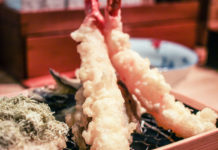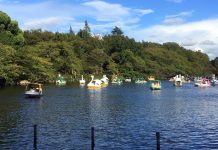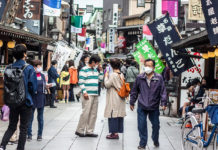I don’t know about you, but I travel with my stomach. I always like to know that there are a few tasty dining options wherever I’m going. And when you’re traveling to an island, which is arranged in multiple districts with somewhat limited facilities, it becomes even more important to do a little research beforehand. So after stepping off the ferry at Naoshima, we promptly picked up an island guide from the Miyanoura Port Information center. We hadn’t done said important research beforehand for myriad reasons (illness, visitors, work and numerous other excuses) so we were cobbling things together on the fly. The guide outlined all the food on Naoshima as well as accommodation, attractions and timetables for the buses and ferries. In other words, a very handy travel companion. With it in hand, we set off to find our accommodation and, more importantly, see what food was around.
From the central table in our beachside Mongolian yurt, we strategised our next few days on the island. We were roughly 30 minutes’ walk from the main Miyanoura area, with the villages of Tsumuura and Honmura 10 and 20 minutes away respectively. Our accommodation’s restaurant was temporarily closed, which meant that we’d have to source all our meals while we were out. Luckily, it turned out that there were plenty of options for us to do just that.
Food in Tsumuura
Tsumuura was the village closest to our accommodation so it would be our dinner destination on the first night. We skipped the town bus in favour of a ten minute walk through the winter rain—still unclear why. Tsumuura is a small place where many of the 12 accommodation providers offer meals, so our choices were limited to ramen, okonomiyaki and Italian. Three excellent options, in my opinion.
We were killing time before the first of them opened at 5:00p.m., so we wandered into the local shop for room snacks and supplies. The obaachan (grandma) behind the counter chatted to a local friend while we browsed, and then, to our amazement, whipped out an abacus to tally our purchases. She giggled, looking up at my husband with stars in her eyes, and I was excited that my visiting sister-in-law could witness this phenomenon. Since moving to Japan, my dear fellow has left a trail of beating grandma hearts right across Japan.

With chips and chocolate purchased, we stepped back out into the chilly coastal air, agreeing that there was really only one thing for the cold: ramen. We loitered in Ramen Tsumu’s car park, watching the owners hang out the noren curtain (open sign), before following them inside. It was a cosy place with a raised tatami seating area that soon filled up with local workers coming off shift.
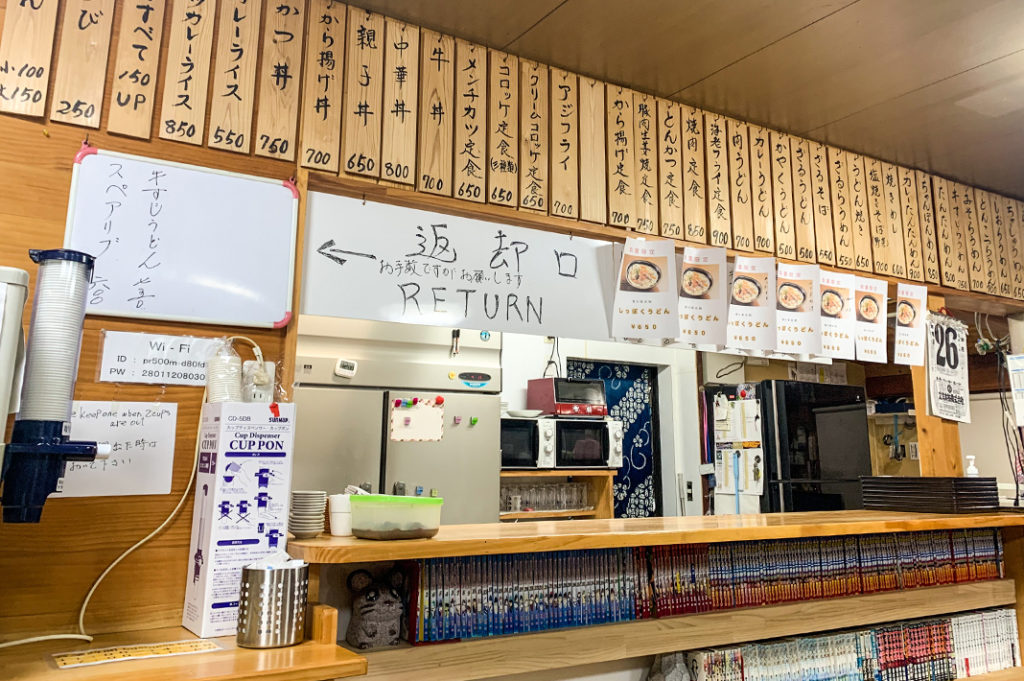
The English menu had multiple types of ramen and plenty of sides. We tried a few things so I could recommend the tantanmen (spicy mince meat ramen) and the “fried squid ring” (ika-ringu).

The place filled up pretty quickly with lively locals and tourists; soon, the staff were turning people away.
Honmura Village
Honmura Village is also on the east coast, but a little further north than last night’s stop. It’s full of traditional old houses and well known for the Art House Project and Tadao Ando architecture museum. The port services ferries to Okayama, Takamatsu and some of the surrounding islands. So, with all the people coming and going, it makes sense that there would be around 20 options for food. There you’ll find udon, tempura, sushi, curry rice, Japanese lunch sets, pizza, coffee and burgers. Quite the selection.
Cafe Ippo
Aiming for breakfast, we made our way to Cafe Ippo who open at 8:00am and serve well regarded vegan fare.
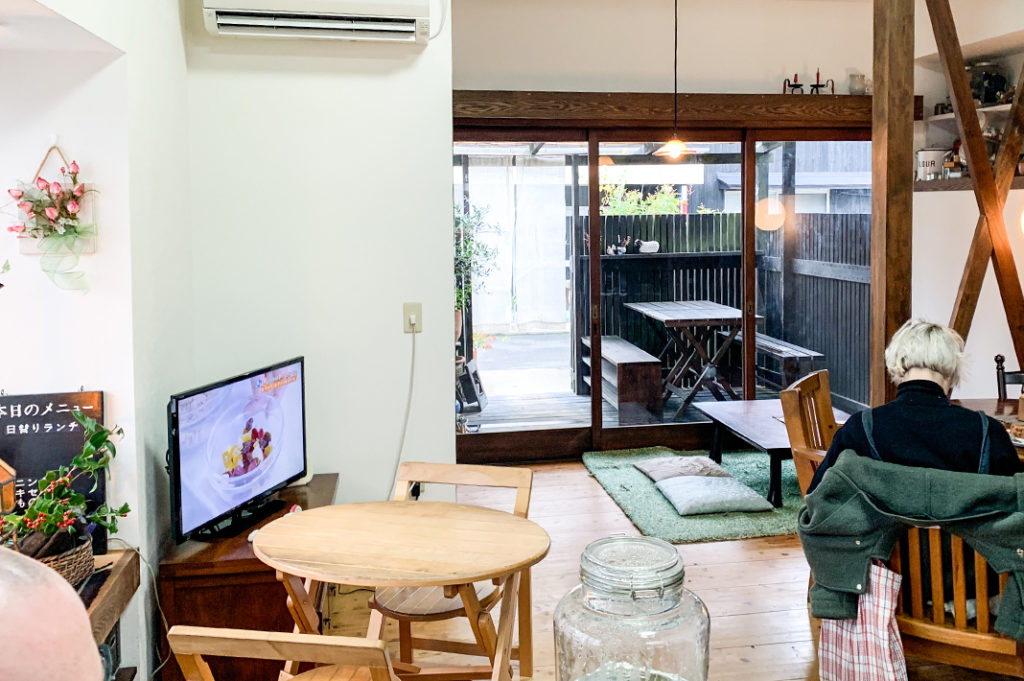

Unfortunately we arrived around 10:30am and were only able to order cake and coffee. It seems we took the last of the cake, too, as people coming in after us were turned away. The staff were super apologetic, giving us delicious sliced apple to say sorry. The interior had a cosy, crafty, lounge room feel to it; we were sad to have to leave in search of more food.

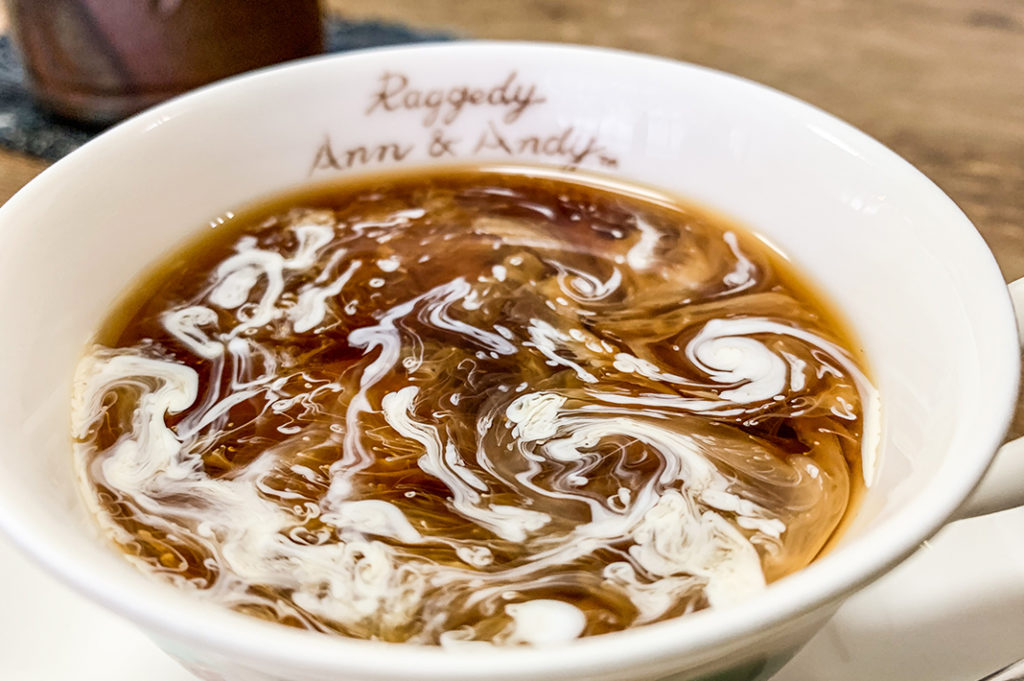
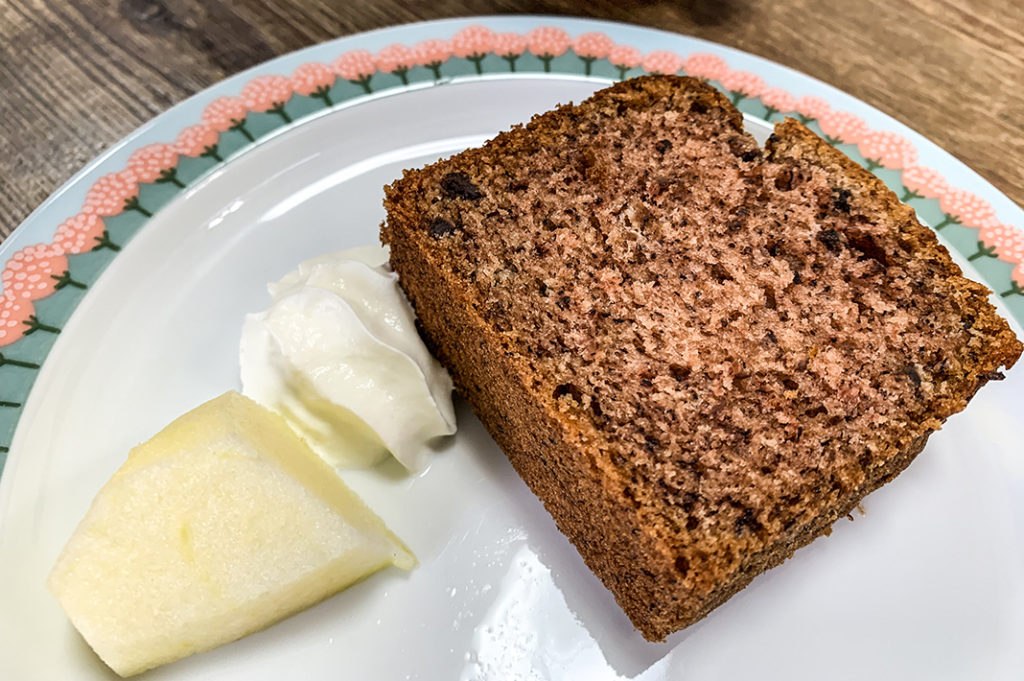
In the end, we grabbed a few mikan (mandarines) from the nearby co-op supermarket and decided to do the Art House Project. We’d stop for lunch when we got hungry. There were promising looking cafes and restaurants all over Honmura. Wen lunch time came, and we went to our chosen restaurant, the little village was quite busy.
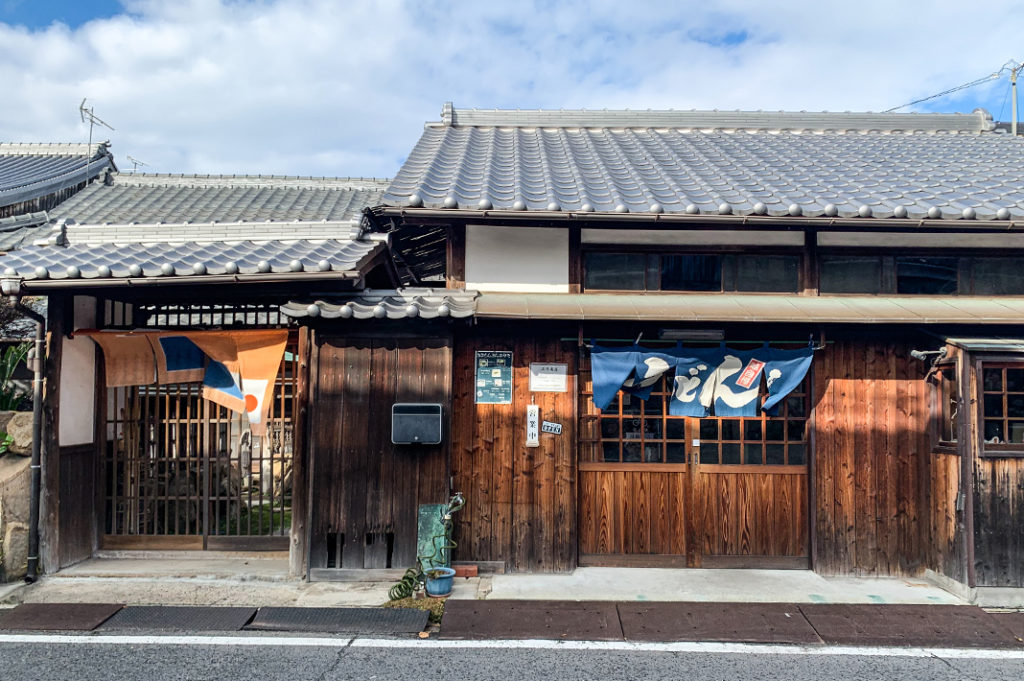
We made our way to Aisunao in search of some wholegrain rice and vegetables, but a queue had formed already. We were too hungry to wait, so kept walking—another place earmarked for next time.
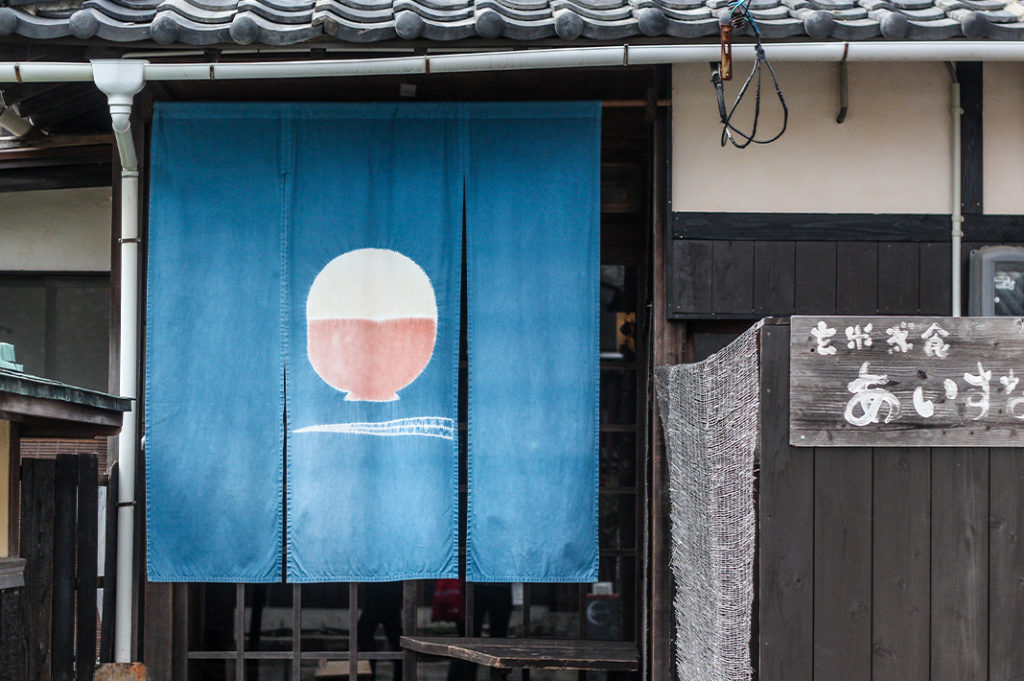
We made our way back to the port where we’d seen Cafe Konnichiwa and had more success this time.
Cafe Konnichiwa
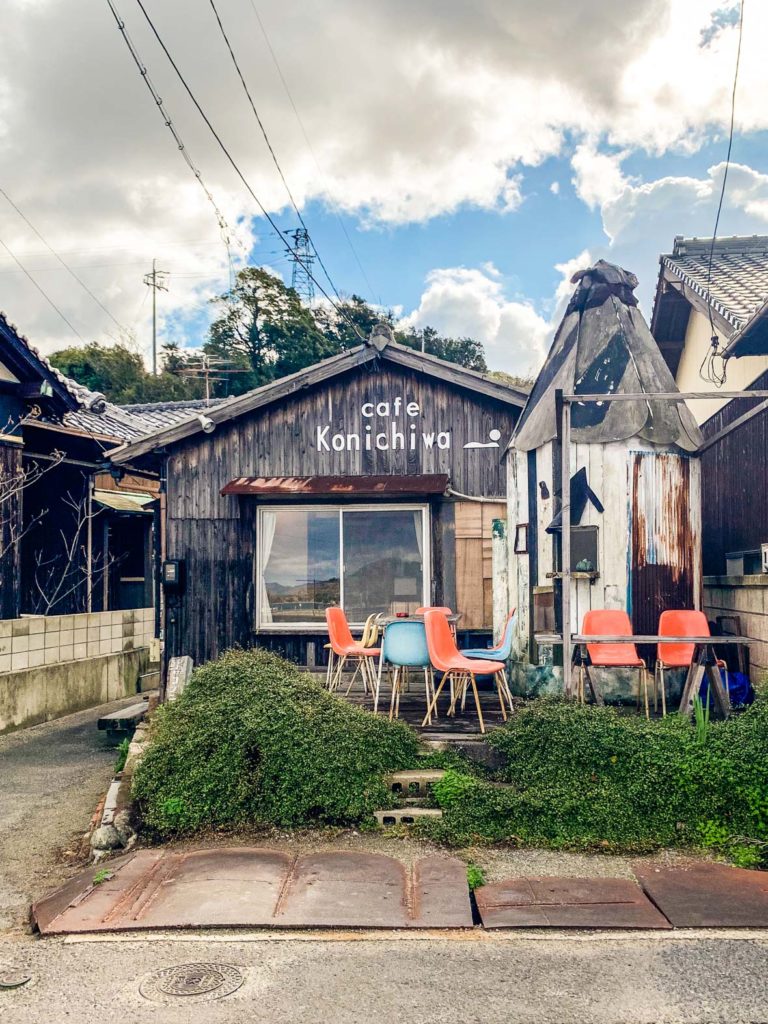
It was a rustic looking building with interior decor not far removed from grandma’s house. The front room had port views and was furnished with tatami mats, cushions and couches.
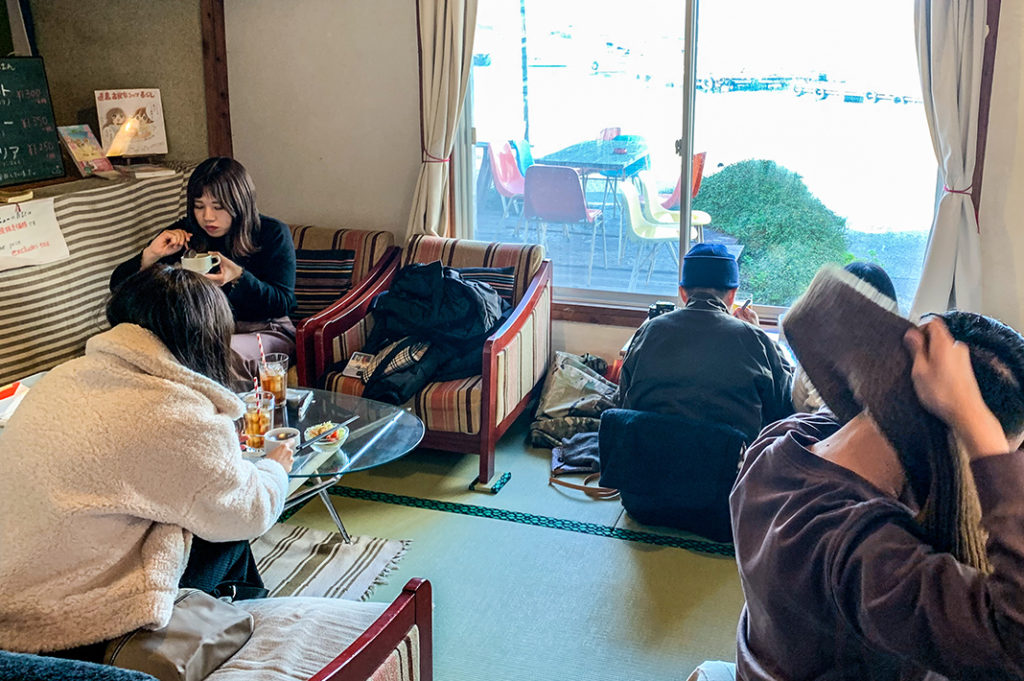
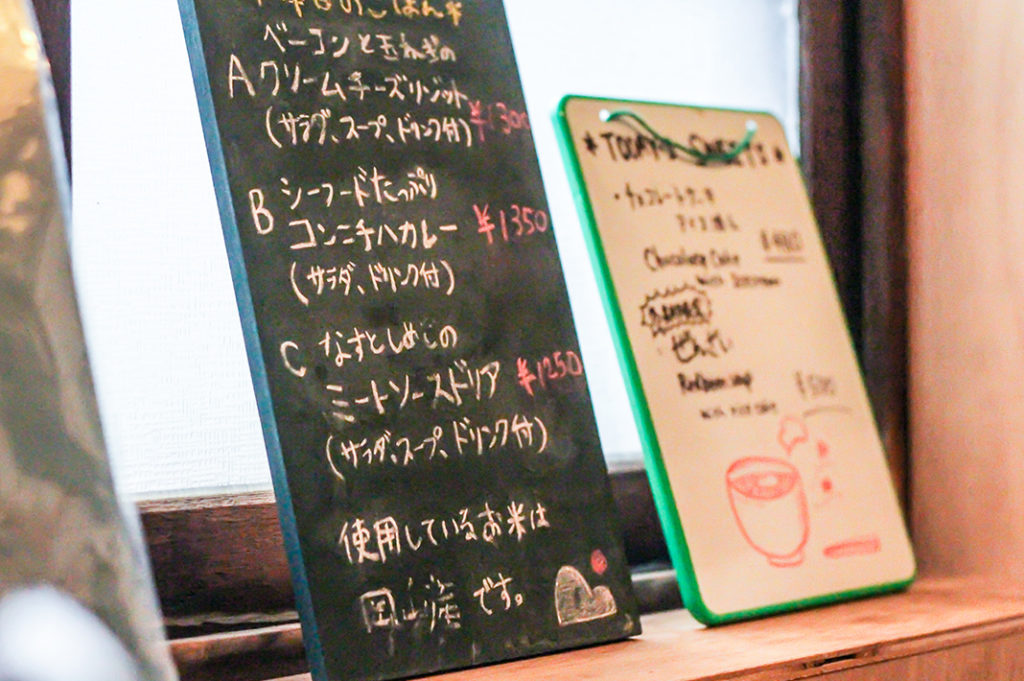
We were seated in the back room, though, where bookshelves housed locally made trinkets for sale. There were three daily specials; carbonara risotto, seafood curry and an eggplant and mincemeat baked doria (casserole), so we ordered one of each and shared.
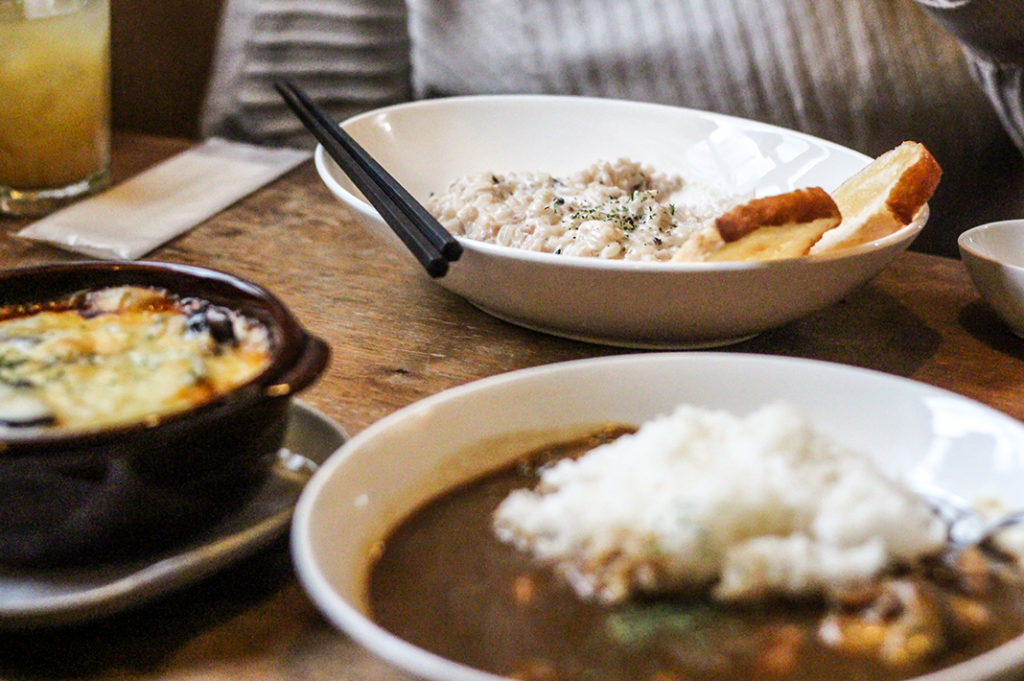
Miyanoura Area
Miyanoura is the first port of call (pun intended) for most visitors to Naoshima. It certainly was for us, though we saved our exploration until the end of our trip. It’s the biggest district on the island and is where you’ll find the law and the saw(bones). That is, police and medical care. Of course, there are a number of sculptures and galleries to see as well as plenty of places to stay and eat. Think tonkatsu, Japanese sets, takoyaki, sushi, cajun chicken, curry rice, falafel and sweets.
We caught the town bus from Honmura, arriving before 5:00pm in search of a pharmacy. Once we had our meds for the aforementioned plan-derailing illness, we set out to explore and suss out a great dinner. While viewing the “I Love Yu” bathhouse, a wonderful aroma drifted over from Shioya Diner’s smoker.
Shioya Diner
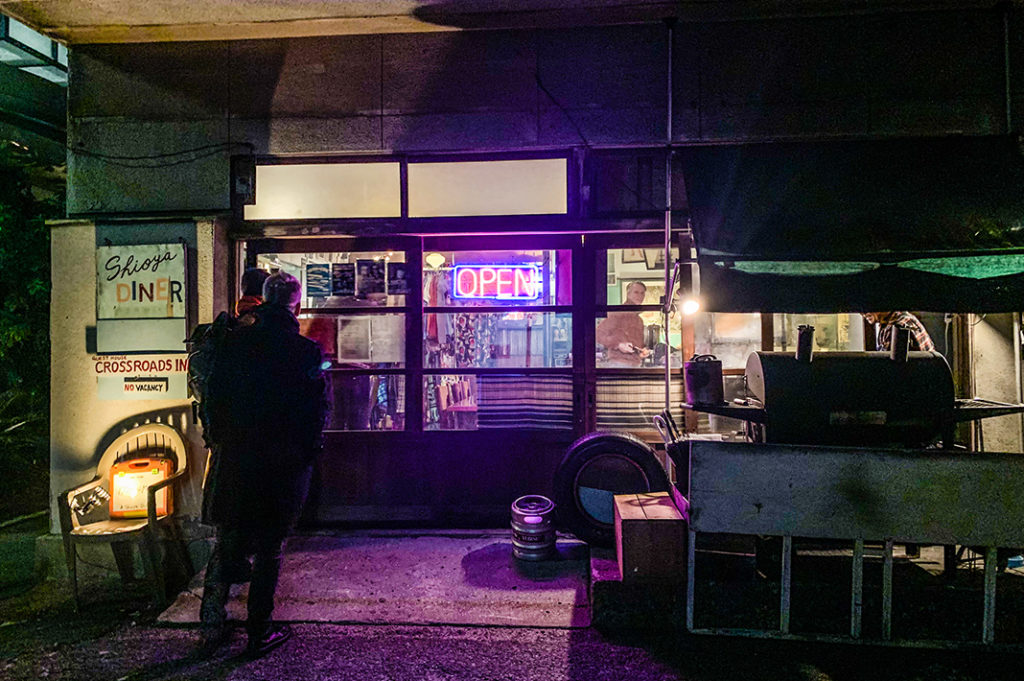
Inside was a retro-tiki-rockabilly-poodle dream of mismatched vintage furniture and walls covered in pictures and trinkets. A small TV played Marlon Brando’s ‘The Wild One’ while jukebox tunes serenaded the diners.
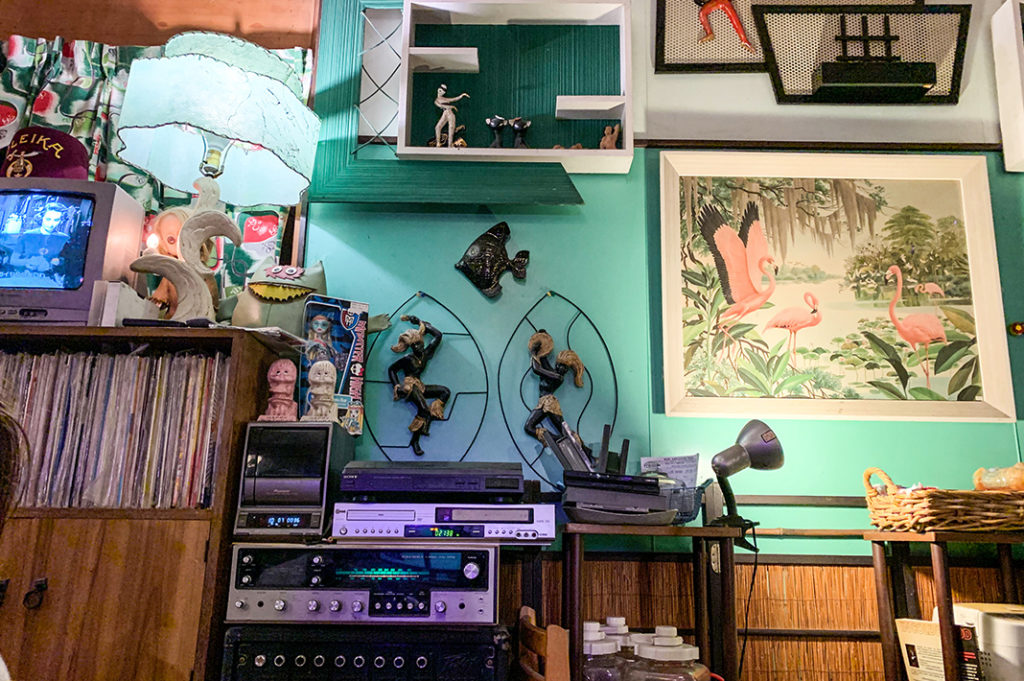
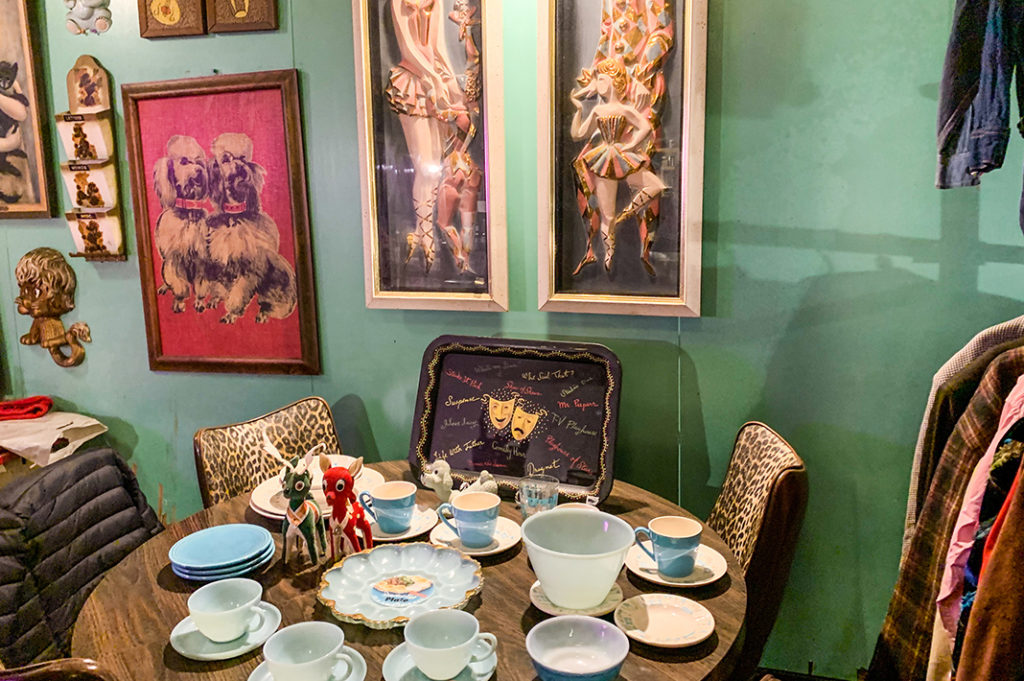
In the corner were vintage clothes and homewares for sale.
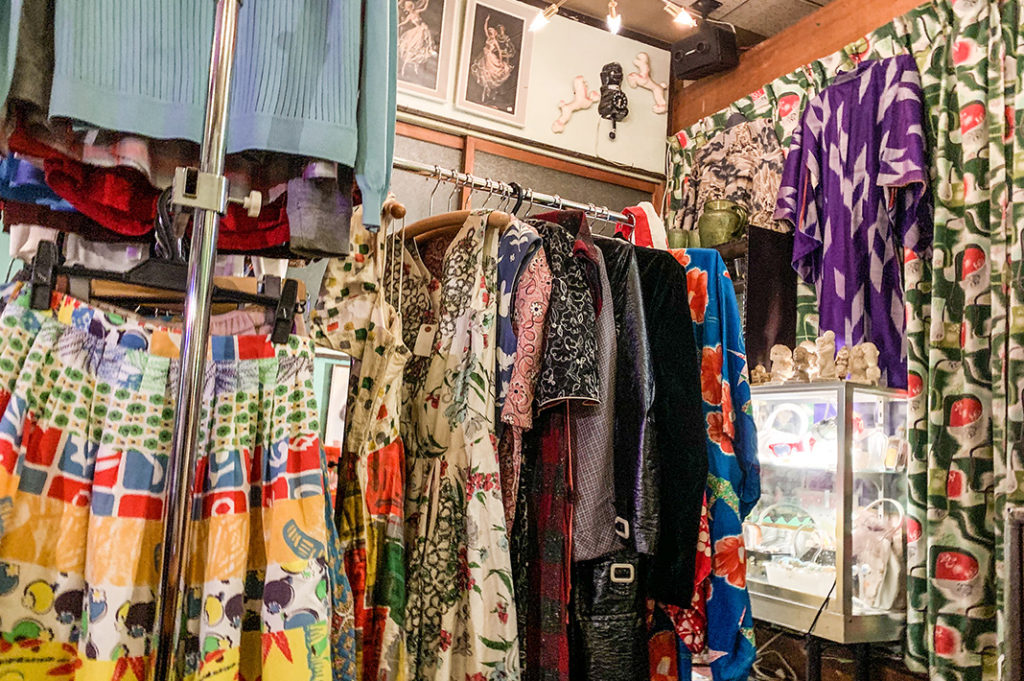
The menu featured steak, chicken, burgers, hot dogs, tacos, taco rice and gumbo. Being Australian, diner fare still retained novelty points, so we ordered two chicken and one burger.
The food was excellent—tender and smoky in all the right ways, with a lovely gin & tonic to wash it all down.
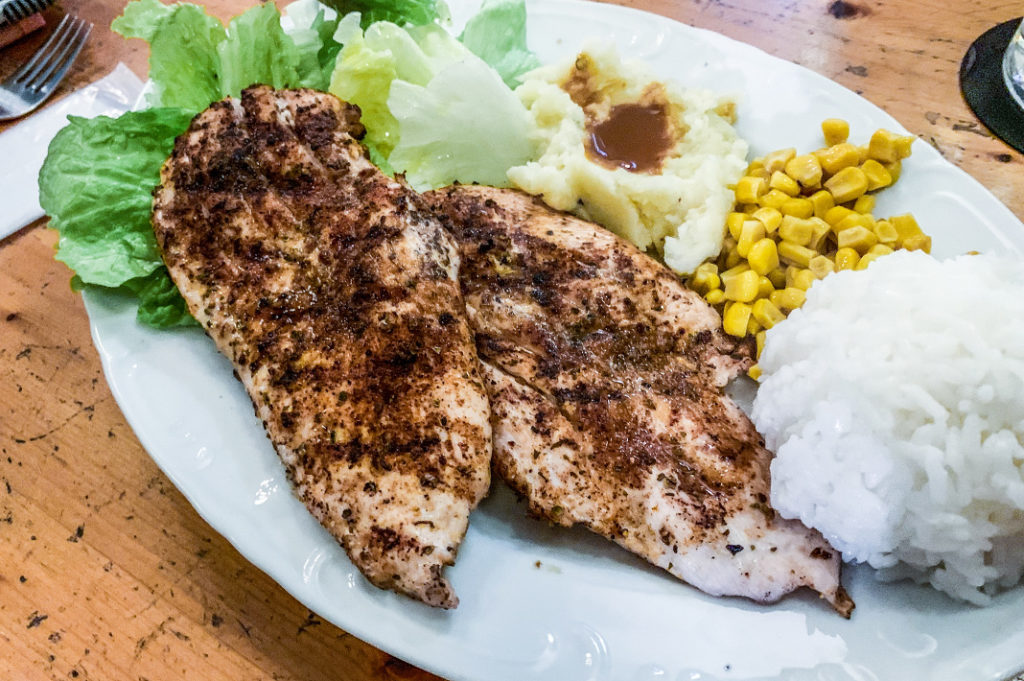

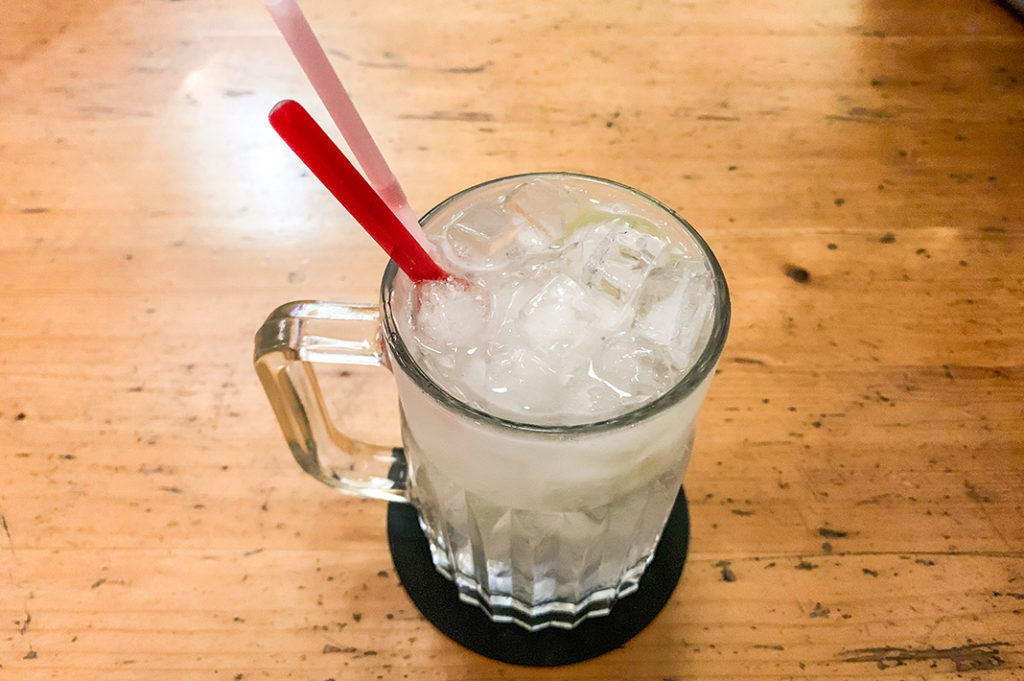
On our way out, we were tempted to visit Bar Saru, the nightspot of Naoshima. We’d passed it earlier when it was closed and were sold based on the paint job alone. Unfortunately, with full bellies, an ill traveller and a bus to catch, we decided to head back to the cosy blankets in our yurt. If you’re in Miyanoura at night, try it and tell me what it’s like.
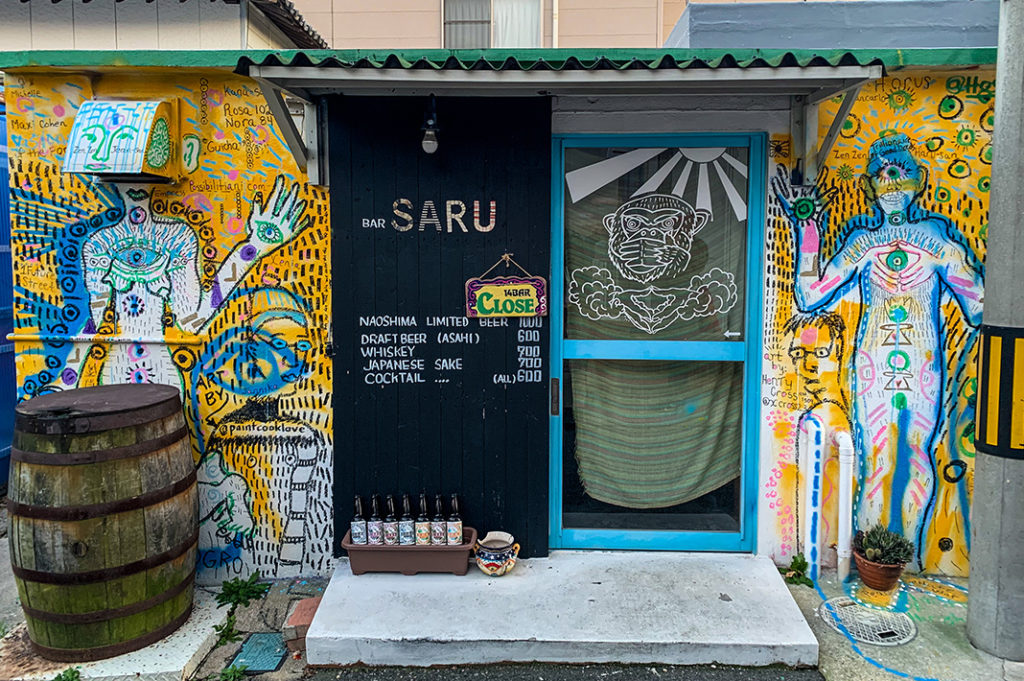
Final Thoughts on Food on Naoshima
Naoshima island is home to some of the best art in Japan, so it’s only natural that the inhabitants and restaurateurs would be artistically expressive, too. Each place had its own unique flair, collectively as much a part of the experience as the art itself. We weren’t disappointed with anything we ate; it’s truly hard to have a bad meal in Japan. My one piece of advice would be to just be flexible! You’ll have a great time wherever you end up.
Post by Japan Journeys.



